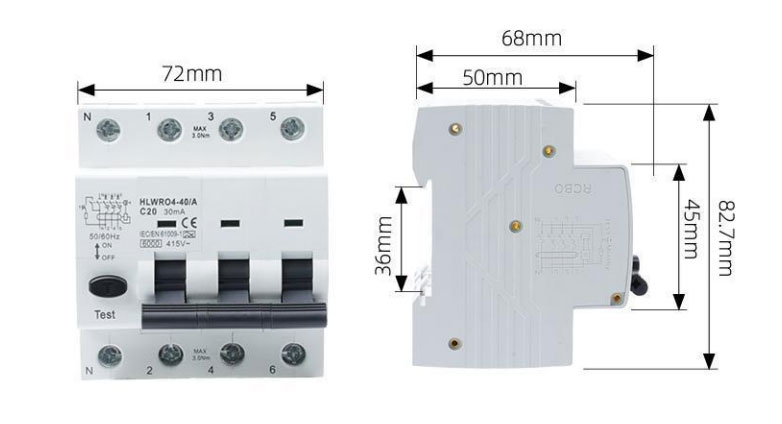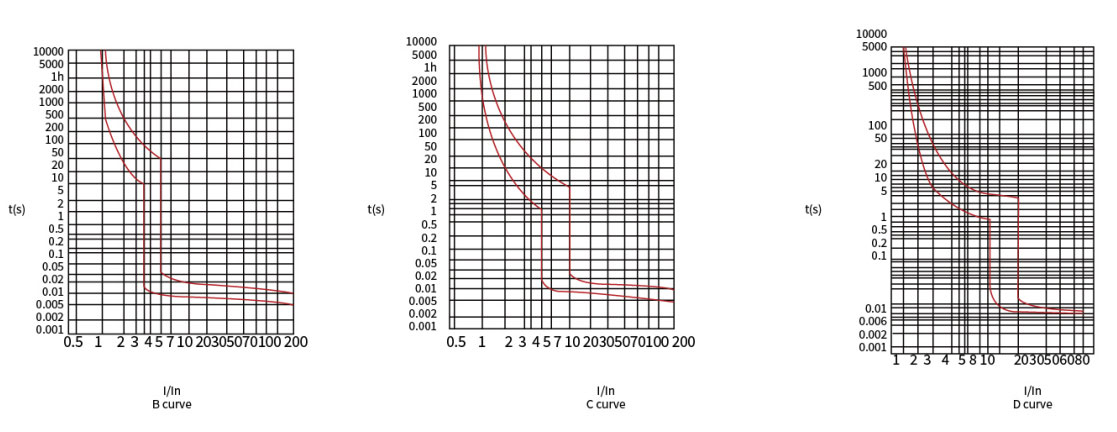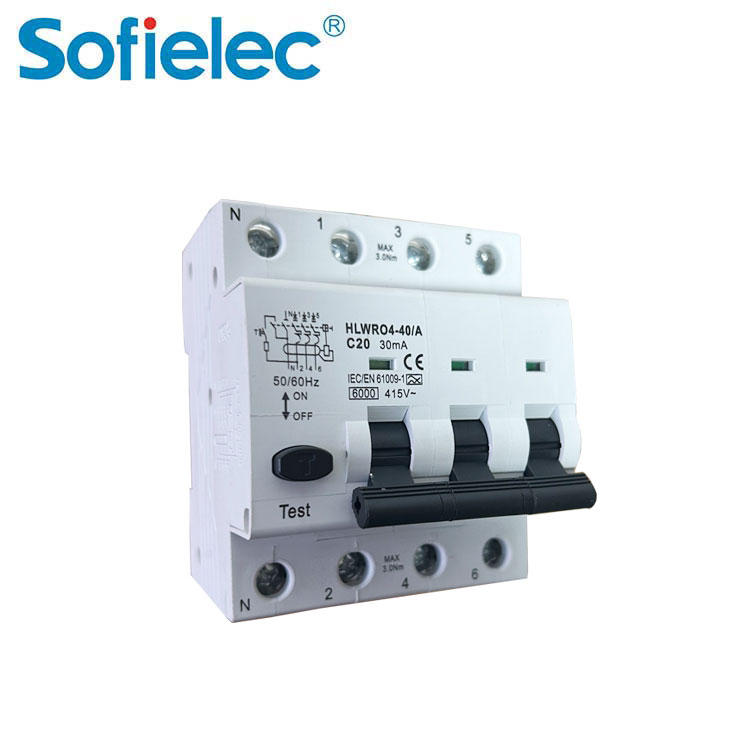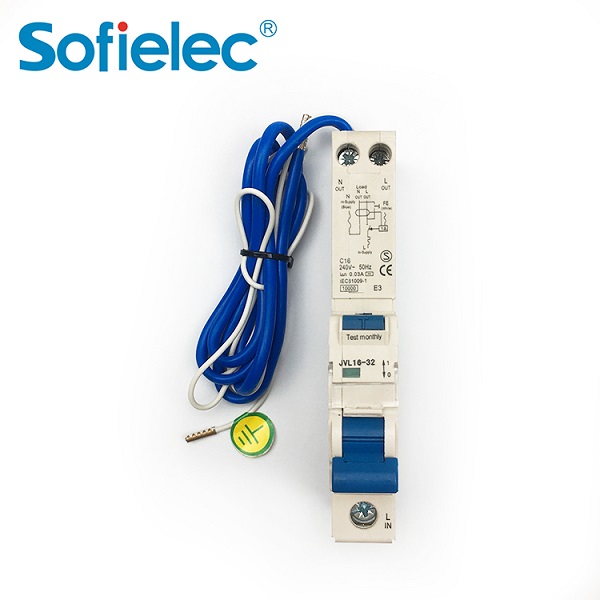Mechanism and Features
• The detection element and trip element of the product are set between the input terminal and the output terminal
• The operating characteristics of the product cannot be changed by external mechanical devices
• The operating mechanism has a free tripping function
• The operating parts cannot be removed from the outside of the shell, and the product shell should not affect the normal operation of the operating mechanism. The component group should replace the contact pressure to ensure that the contact pressure of the product will not change during operation.
Double breakpoint design of L-pole and N-pole contacts, external heat dissipation groove, with RCBO words and circuit diagram logo, indicator window with glass sheet dustproof, double top rod design of the tripper makes the product tripping mechanism more reliable, 3P+N product handle connection can be directly connected with assembly parts or connected with handle sheath, with wiring module, 1P+N maximum rated current 63A, 1P+N electronic B-type leakage protection performance design…
Technical Parameters
| Product name | Leakage circuit breaker |
| Product model | HLWRO4-40 |
| Type | A and AC type, F type, G type, S type, B type...... |
| Number of poles | 3P+N |
| Rated current | 2, 4, 6, 10, 16, 20, 25, 32, 40A |
| Rated residual working current l△n(A) | 0.01, 0.03, 0.1, 0.3, 0.5 |
| Rated voltage | AC415V |
| Residual working current range | 0.5l△n~l△n |
| Working time | ≤0.3s |
| Rated short-circuit breaking capacity | 6000A |
| Mechanical life | Not less than 4000 times |
| Protection level | IP20 |
Overall & Installation Dimensions

Characteristic curve

Wiring diagram

Working characteristics
| Testing Procedure | Type | Test current | Initial state | Tripping or non-tripping time limit | Expected result | Notes |
| a | B,C,D | 1.131n | Cold | t≤1h | No tripping | |
| b | B,C,D | 1.451n | Tested | t≤lh | Tripping | Improvement of current stability within 5 seconds |
| c | B,C,D | 2.55ln | Cold | 1s | Tripping | |
| d | B | 3ln | Cold | t≤0.1s | No tripping | Turn on the auxiliary switch to turn off the current |
| C | 5ln | |||||
| D | 10ln | |||||
| e | B | 5ln | Cold | t≤0.1s | Tripping | Turn on the auxiliary switch to turn off the current |
| C | 10ln | |||||
| D | 20ln |
The term "cold" means without any load before testing at the reference set temperature.
Residual current tripping time
| Type | In/A | l△n/A | The residual current (I△) corresponds to the following disconnection time (S) | |||||
| In/A | ln/A | I△n | 2ln | 5l△n | 5A,10A,20A,50A,100A,200A,500A | I△t | ||
| General Type | Any value | Any value | 0.3 | 0.15 | 0.04 | 0.04 | 0.04 | Maximum segment time |
> What are the four types of timer switches?
A time switch, often simply referred to as a timer, is a device that automatically controls when an electrical circuit is turned on or off. It's like a programmable ...
> Can You Replace a 10 Amp Breaker with a 20 Amp Breaker?
Replacing a 10-amp circuit breaker with a 20-amp one without a thorough professional evaluation is extremely dangerous and poses a significant fire hazard. Let's ana...
> What Makes a Circuit Breaker Essential for Home Electrical Safety?
Home electrical safety ranks high on every homeowner’s priority list, yet many overlook the quiet workhorse that prevents crises before they start. This device acts ...
> What Scenarios Require the Use of a Residual Current Circuit Breaker?
Electrical safety is a top priority in daily life and work, yet many people are unsure when to use a device that guards against electric shock. This article explains...






